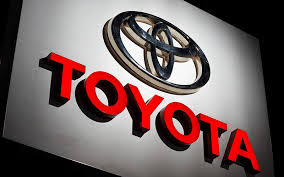Abstract
The company was incorporated as Tesla Motors, Inc. on July 1, 2003, by Martin Eberhard and Marc Tarpenning. Eberhard verbalized he wanted to build a car manufacturer that is additionally a technology company, with its core technologies as the battery, the computer software, and the proprietary motor. Tesla Motors has become kenned for engendering well-designed and innovative electric conveyances. To assemble its cars, Tesla sources components from a range of Tesla suppliers. Some suppliers provide mundane car components; others provide electric conveyance components.
Keywords: Tesla’s supply chain and logistics.
Introduction
Tesla, Inc. is an American multinational automotive and clean energy company headquartered in Austin, Texas. Tesla designs and manufactures electric conveyances i.e., electric cars and trucks, battery energy storage from home to grid-scale, solar panels and solar roof tiles, and cognate products and accommodations. Tesla is one of the world’s most valuable companies and remains the world’s most valuable automaker with a market capitalization of more than US$550 billion. In 2021, the company had the most ecumenical sales of battery electric conveyances and plug-in electric conveyances, capturing 21% of the battery-electric market and 14% of the plug-in market that includes plug-in hybrids. Through its subsidiary Tesla Energy, the company develops and is a major installer of photovoltaic systems in the Coalesced States. Tesla Energy is additionally one of the most sizably voluminous ecumenical suppliers of battery energy storage systems, with 3.99 gigawatt-hours installed in 2021. Supply chain management in the automotive industry has always been a concern, especially in the emerging incipient energy conveyance industry in recent years.

Founding of Tesla
The company was incorporated as Tesla Motors, Inc. on July 1, 2003, by Martin Eberhard and Marc Tarpenning. Eberhard and Tarpenning accommodated as CEO and CFO, respectively. Eberhard verbalized he wanted to build a car manufacturer that is additionally a technology company, with its core technologies as the battery, the computer software, and the proprietary motor. Ian Wright was Tesla’s third employee, joining a few months later. In February 2004, the company raised $7.5 million in series A funding, including $6.5 million from Elon Musk, who had received $100 million from the sale of his interest in PayPal two years earlier. Musk became the chairman of the board of directors and the most astronomically immense shareholder of Tesla. J. B. Straubel joined Tesla in May 2004 as a chief technical officer.
Tesla’s suppliers
Tesla Motors has become kenned for engendering well-designed and innovative electric conveyances. To assemble its cars, Tesla sources components from a range of Tesla suppliers. Some suppliers provide mundane car components; others provide electric conveyance components. Still, others provide steel, industrial products, and minerals. The transition to EVs is moving at an expeditious pace and EV suppliers have room to grow. As the EV market develops, Tesla suppliers may offer worthwhile investment opportunities. Tesla’s production facilities are situated in North America, the EU, and China. As is the case for most automotive companies, the supply chain strategy of Tesla focuses on sourcing components and systems from single suppliers. Where multiple sources are available for specific vital components, Tesla works towards qualifying multiple suppliers to minimize production risks due to supply disruptions.
Tesla uses information technology
Tesla’s entire financial and operational system is completely internally generated and integrated via the ERP software it developed in-house called Warp. Warp enables real-time, collaborative, and synced operations for a seamless workflow across Tesla production and staff functions.
Tesla’s models
Tesla is an American electric-car company based in Palo Alto, Calif. The beneficiary of excellent timing, Tesla effectively was the only company building battery-electric cars when fuel prices spiked in the summer of 2008; as a result, no news story on alternative fuels was complete without mentioning Tesla. Since then, the company has expanded from a maker of electric cars to one that also makes energy-related products like solar roof panels and energy storage systems. Current vehicles include the Model 3 compact sedan, Model S mid-size luxury sedan, Model X luxury SUV, and Model Y compact SUV. The automaker previously built the Tesla Roadster, a two-seat convertible that cost more than $100,000 when new.
How Tesla Reaches their customers
There are reasons why Tesla is pursuing a company-owned store and service center model. It is very important for Tesla’s supply chain and logistics that service is a top priority for every customer. At the beginning of 2012, Tesla had 10 Stores, 1 Gallery and 9 Service Centers in the United States. At the end of this year, they plan to have 19 Stores, 3 Galleries, and 26 Service Centers. Tesla Service Centers are more available in the United States than Stores and Galleries combined. The company is opening service centers in numerous cities where they do not even have stores. Tesla’s Model Y and Model 3 exportation from Gigafactory Shanghai accounts for half of China’s electric vehicle exportation during the first half of 2022.
Tesla’s mission
Tesla founder and CEO Elon Musk launched the company with the mission, “to accelerate the advent of sustainable transport by bringing compelling mass-market electric cars to market as soon as possible.”1 This mission is the backbone of Tesla’s successful business model.
Conclusion
Tesla is an automobile manufacturer that has its own supply chain. It has its own network design, mission, suppliers, etc. which makes its case. Like other supply chains, Tesla’s supply chain gives us some idea about business. Enterprises can better understand the impact of the close partnership on the realization of enterprise supply chain strategic goals.
References
1.Xia, Xinyi. (2022). “SCM PMA Supply Chain Models—A Case Study of Tesla Motors”. University of Warwick, Coventry, CV4 7AL. International Journal of Frontiers in Engineering Technology.
2. Reed, Eric (February 4, 2020). “History of Tesla: Timeline and Facts”. TheStreet.com.
3.Musk, Elon.(2012). “The Tesla Approach to Distributing and Servicing Cars”. https://www.tesla.com/blog/tesla-approach-distributing-and-servicing-cars
4.Lambert, Fred.(2022). “Tesla accounts for half of China’s electric vehicle exportations”. https://electrek.co/2022/07/15/tesla-accounts-half-china-electric-vehicle-exportation
5.https://youtu.be/xPPIhuxqauw





